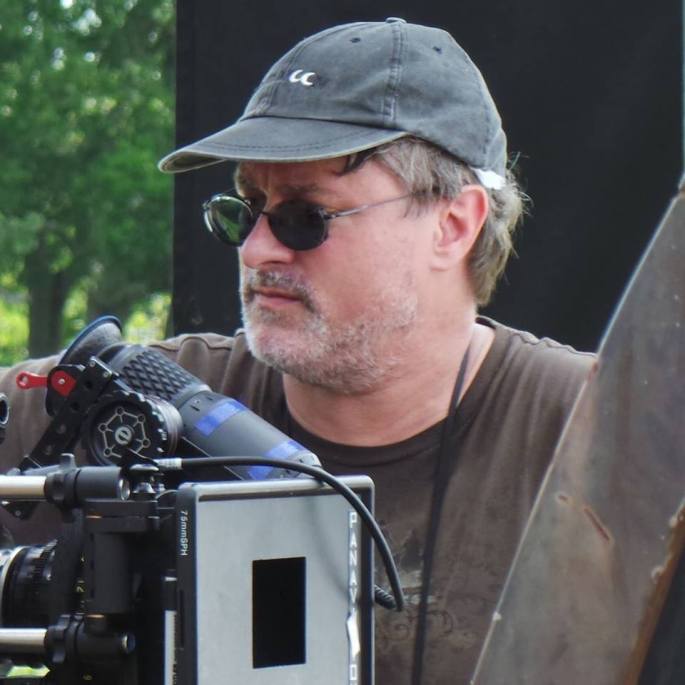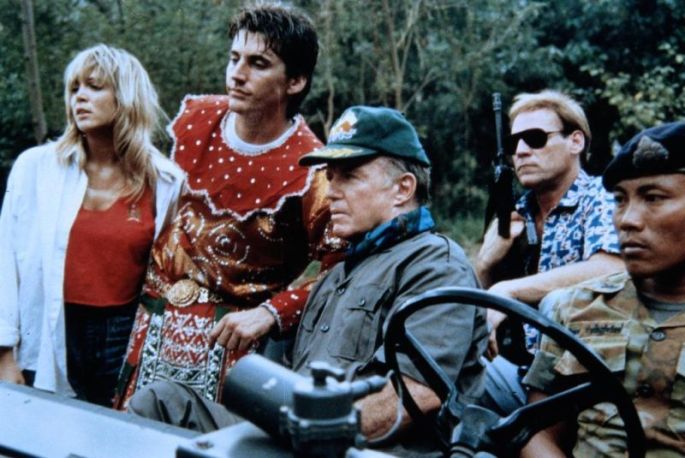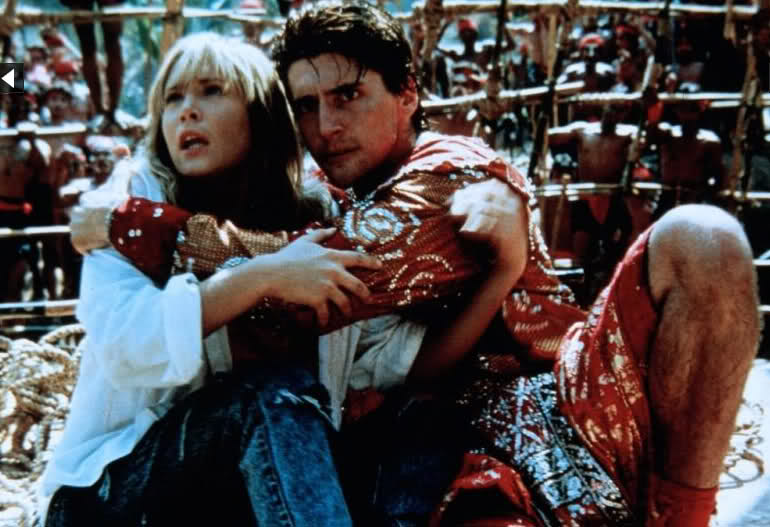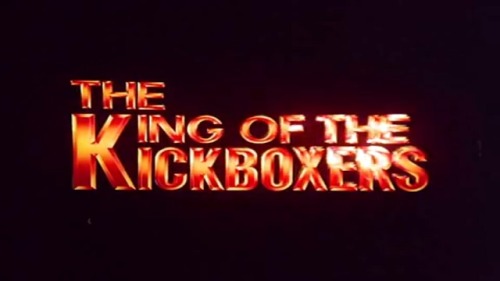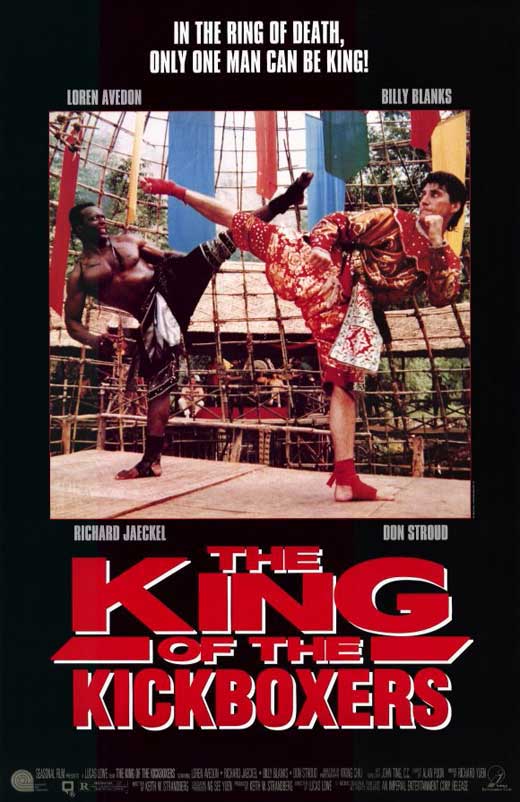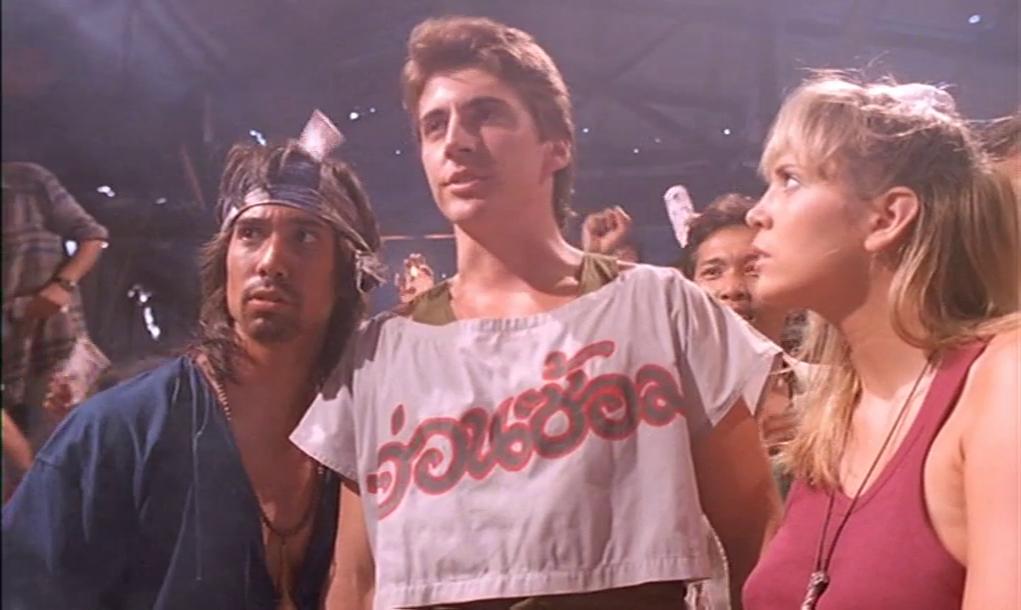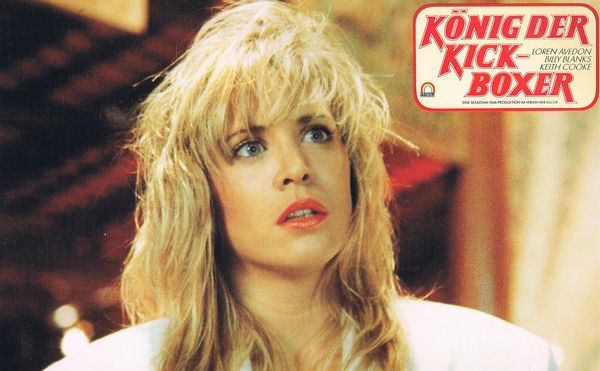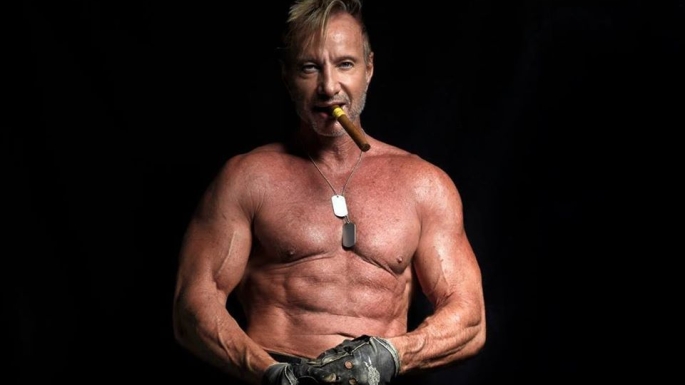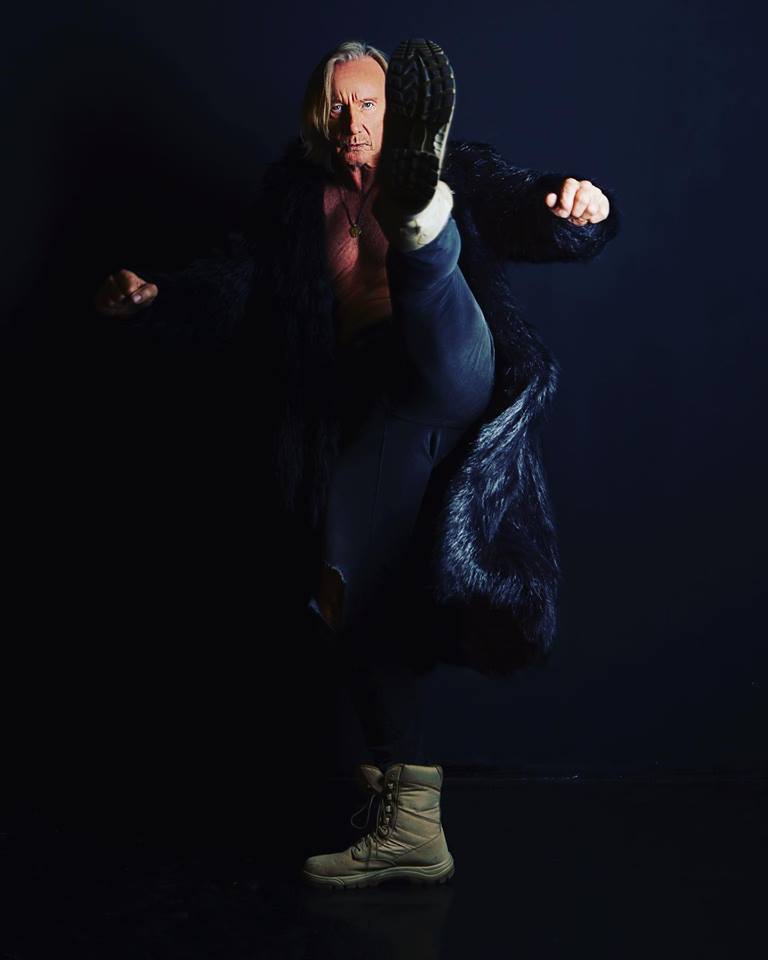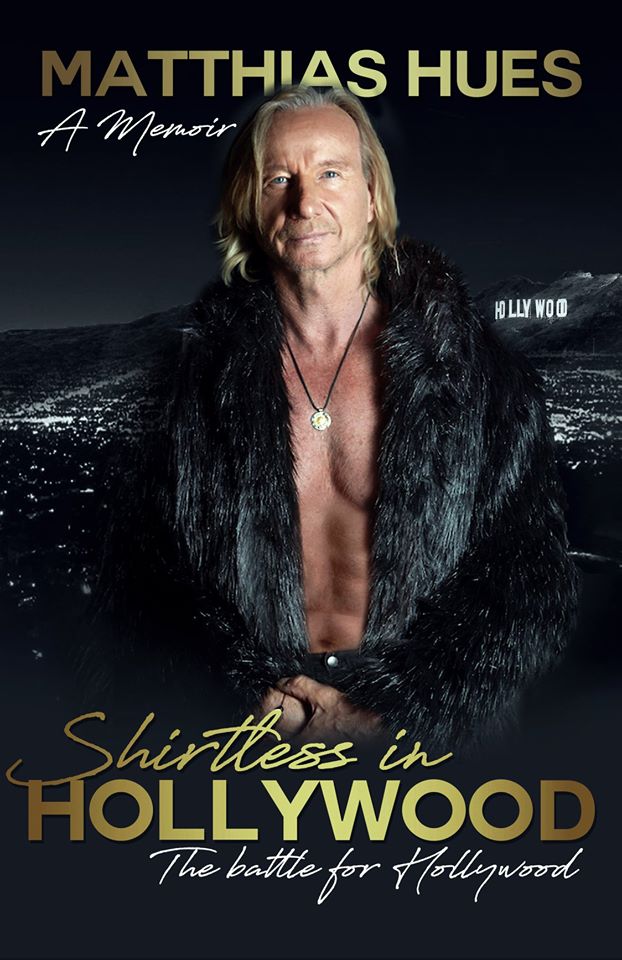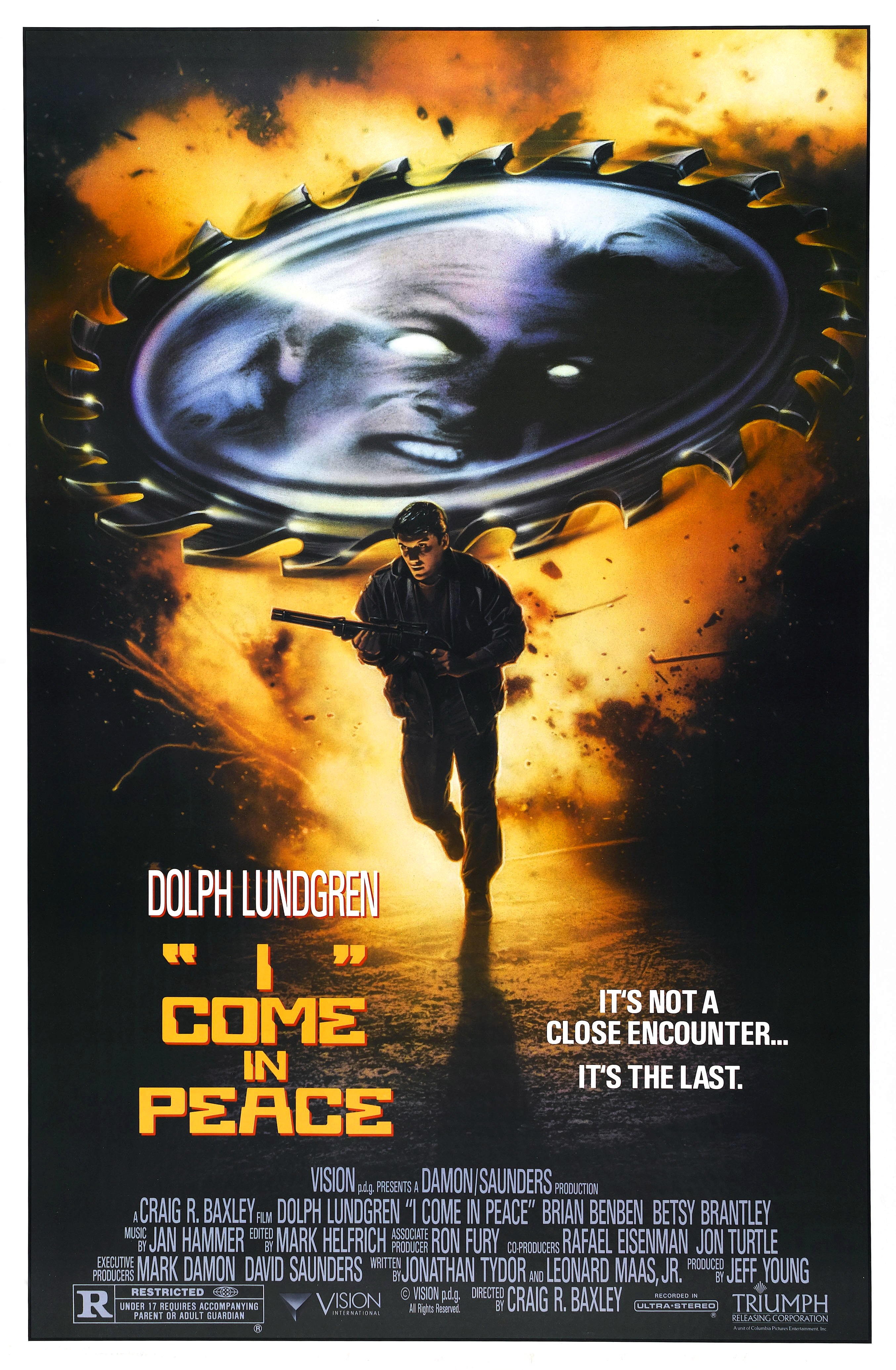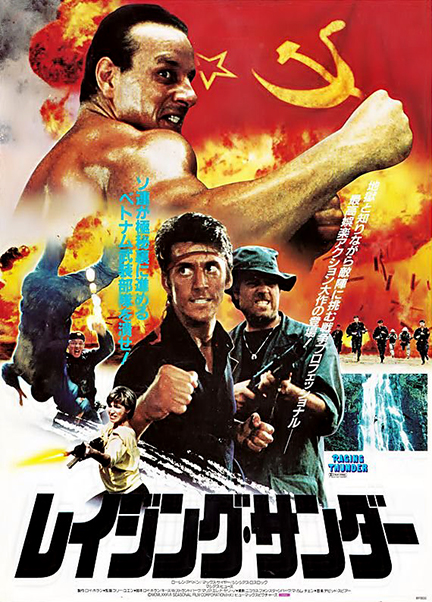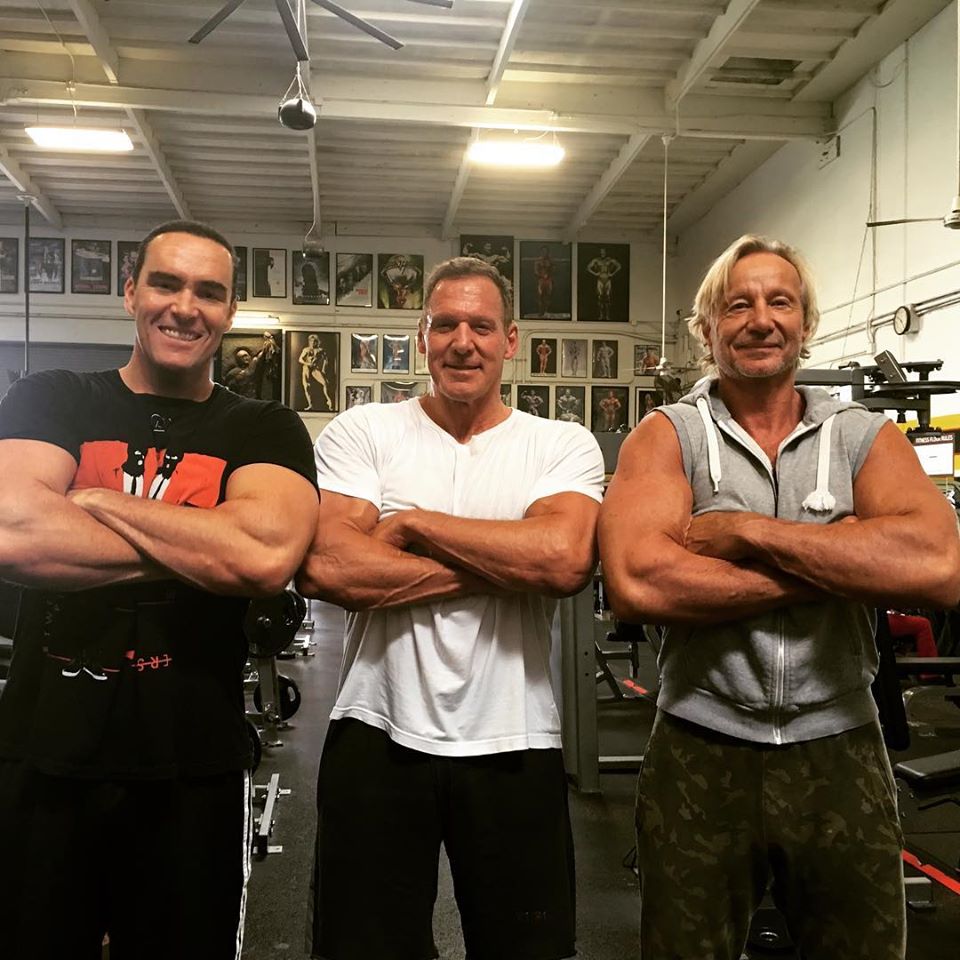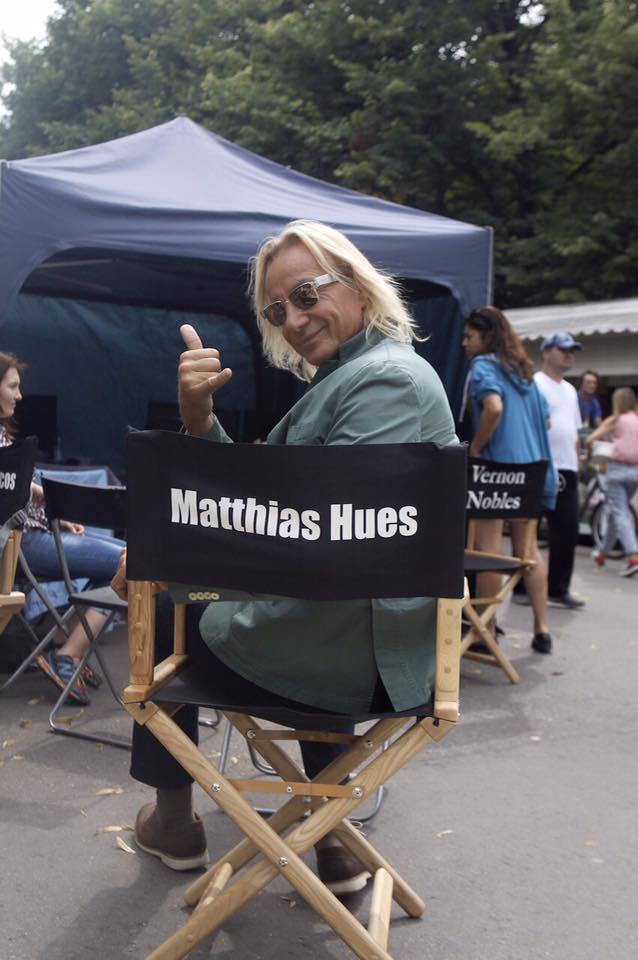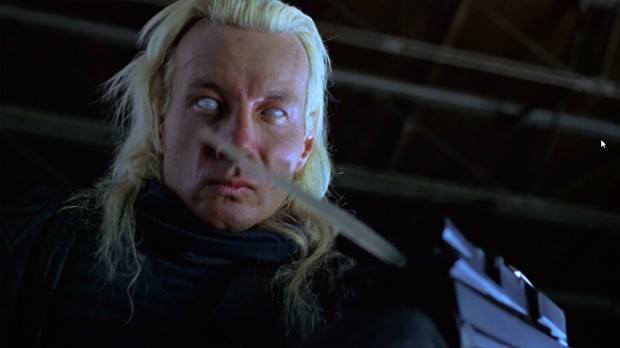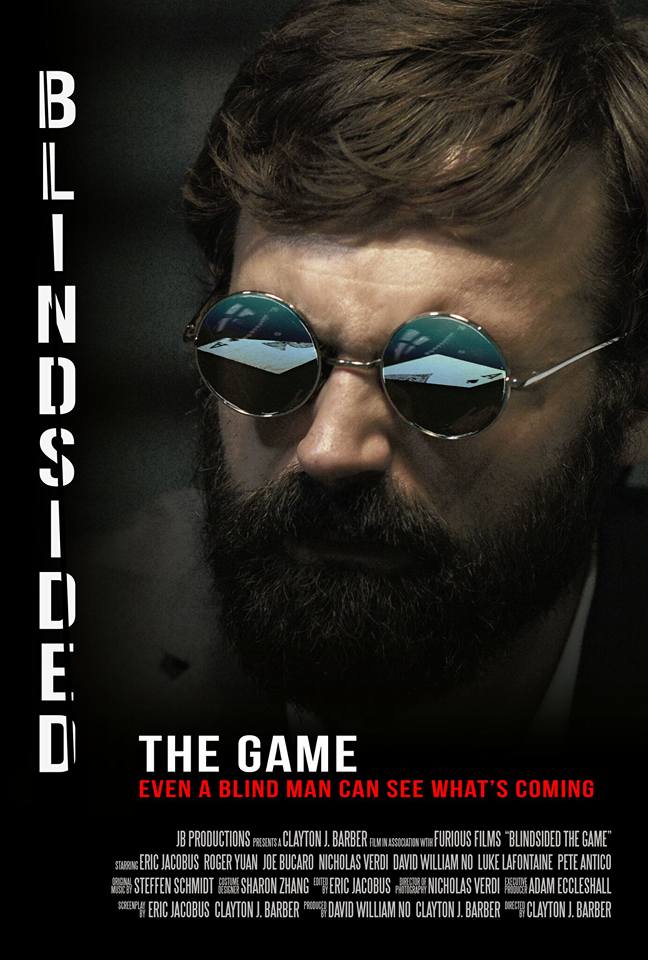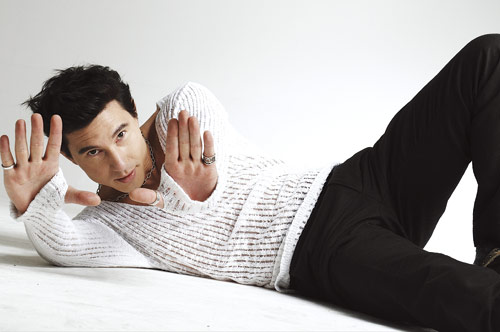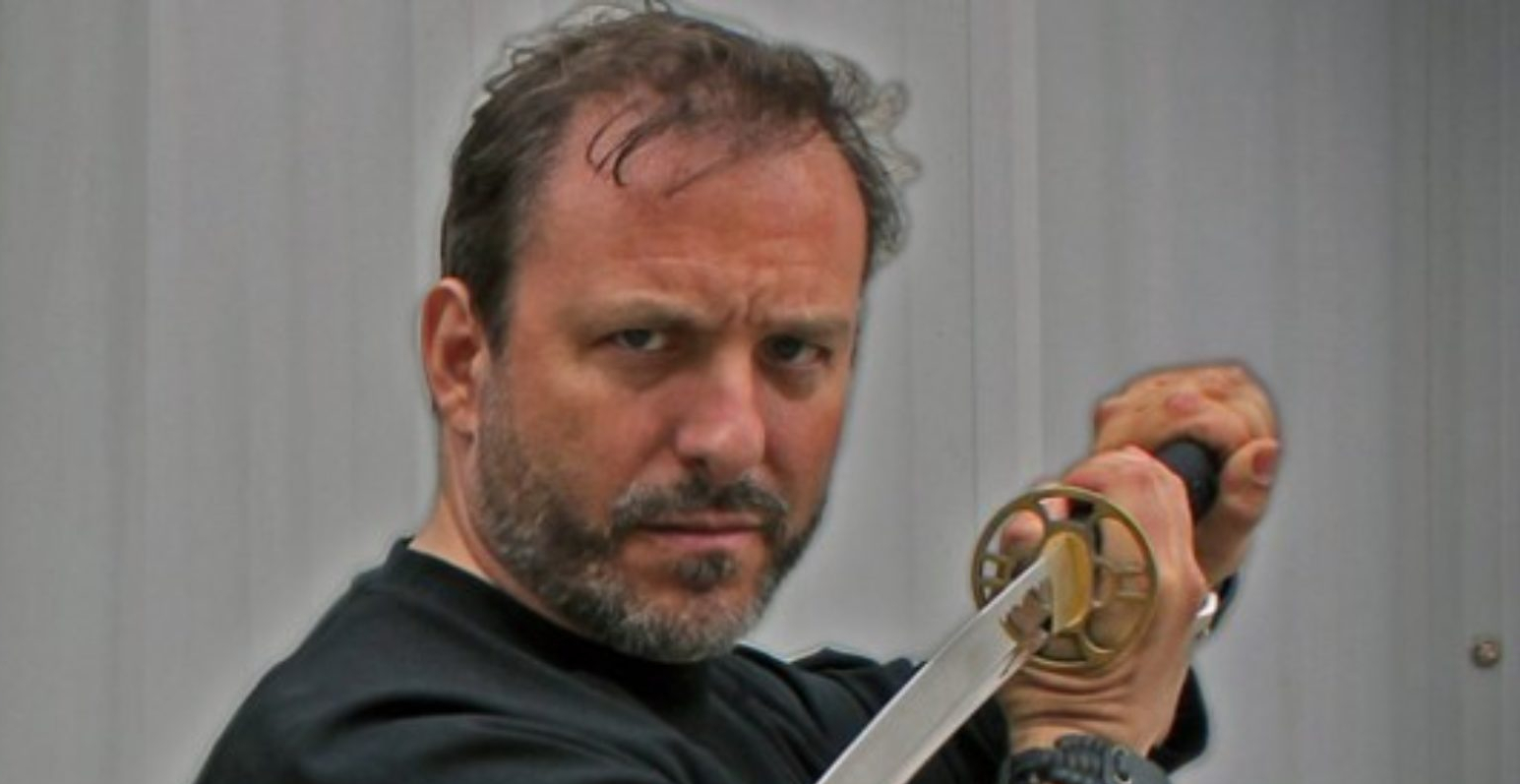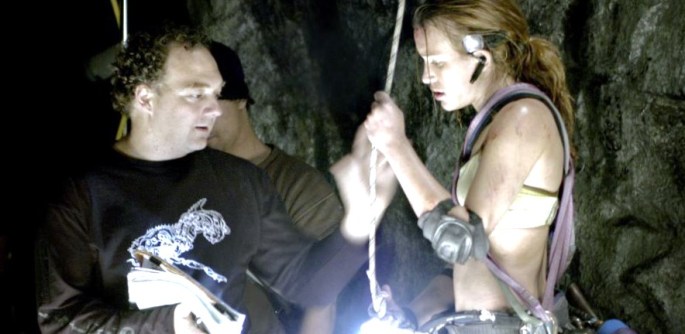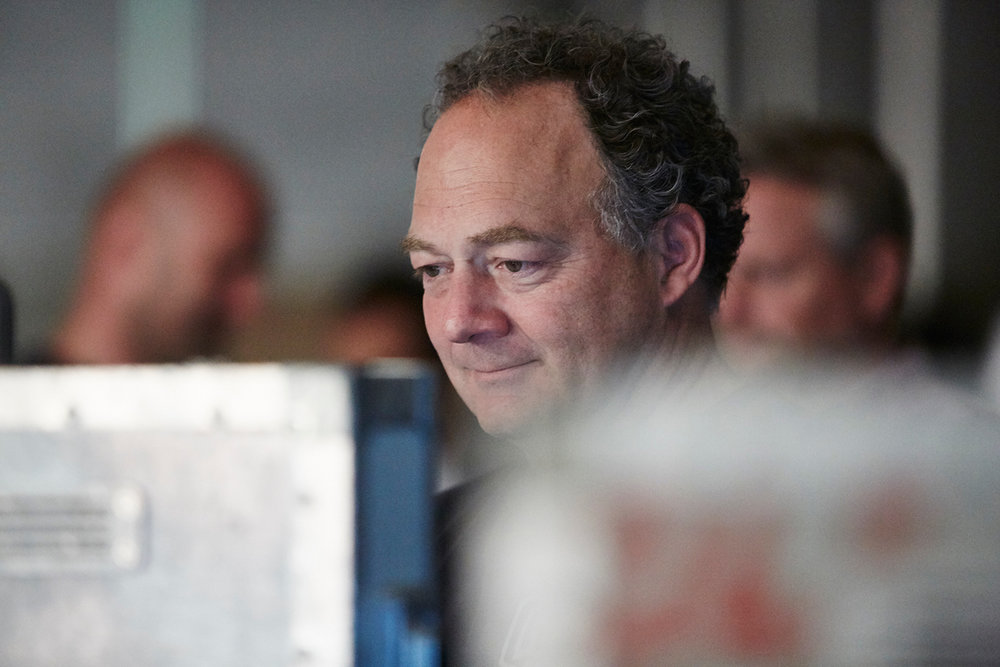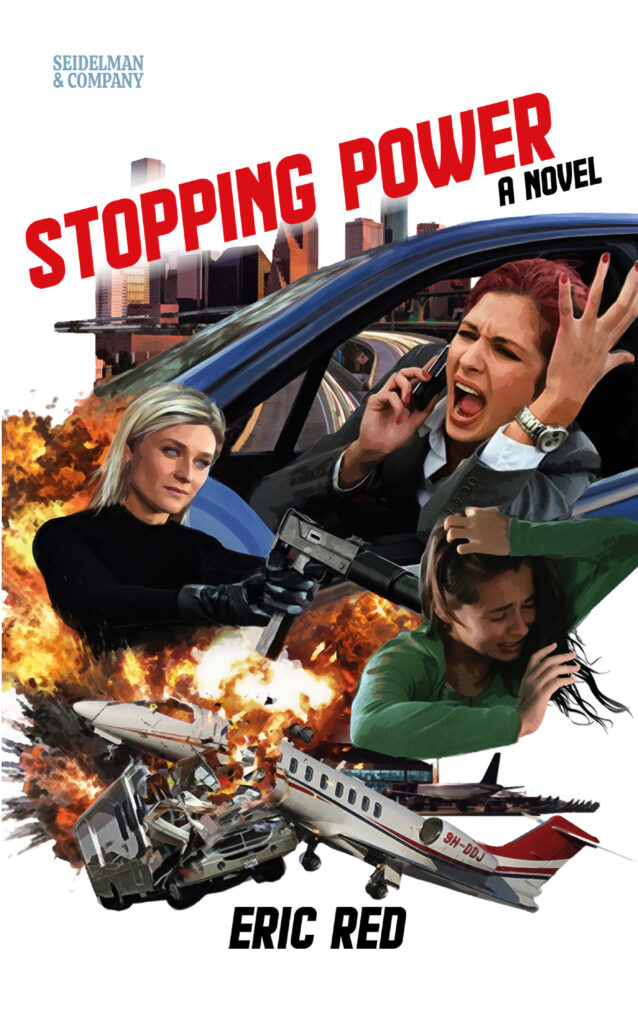
With pages that zoom ahead at the pace of a well-crafted screenplay; the further I was pulled along by what seemed like a rope around the neck, deeper into Eric Red’s (Body Parts, Bad Moon) latest action spectacle-in-print, I found myself thinking of that old story of a script called Simon Says. Of course, by the time Simon came to a theater near you…the title of the picture had changed to Die Hard: With a Vengeance.
If you carry on and research that story…you’ll stumble across another little tale about another spec script titled: Troubleshooter. This also would eventually find its way before eager, action-seeking audiences. Though, they weren’t so eager when they came out of Speed 2: Cruise Control.
But let us not dwell on the frailties of ego and hubris, I’m here because, although I haven’t podcasted them softly from a distance in some time, all-of-sudden, there came the opportunity to have a powwow with a filmmaker/novelist whose work I’ve long admired. It sounded like a hot ticket. And I was flattered beyond belief when, being accustomed to the ever-convenient PDF, I not only received a copy of STOPPING POWER, but two other of Eric’s newest efforts, including one headed for our screens in the form of WHITE KNUCKLE.
So now, as my veracity may be in question, you’re wondering why I would begin writing about Mr. Red’s new book talking about how someone else’s idea was transformed into franchise fodder? The answer isn’t simple. It’s kinda just where my head went to as the story unfolded. I kept thinking, “If Eric Red wasn’t ERIC RED…they would totally reconfigure this into like a Speed 3.” And as Stephanie Power’s problems start to look like the tidal waves the James Cameron’s NTI’s were going to use to wash the pestilence that is humanity from the face of the Earth in his ABYSS, my head kept spinning like the wheels of so many vehicles in, HANDS DOWN, the best car chases I’ve thus encountered on the printed page.
STOPPING POWER will make an equally incredible film. And should WHITE KNUCKLE’s transition prove successful, I dare say, then it shall not be long before this mother/daughter/action/heist/thriller; with an ensemble of such surprising, terrifyingly and delightfully depraved villains that play cat and mouse and Russian Roulette with the lives Stephanie Power and her daughter. There’s 60 million dollars in bearer bonds as well as every cop in Texas on the hunt for this woman who is Power by name, but powerful by nature. I’ve already spoke on the blinding action that awaits you here, but the character work is not to be underestimated. Mr. Red, you can tell is a screenwriter as the pages decline. He knows that if you don’t give a damn about the people in peril…then he’s gonna lose you.
Lucky for you, dear reader, there are enough twists and turns and further secrets unearthed as the story snakes around the highways like the frantic mother behind the wheel, a puppet being pulled by evil strings as her daughter sits at the end of the barrel of a loaded, automatic weapon. She’s a bomb on the bus, only the bus is an RV. There’s a shitty ex-Husband, there’s an unlikely hero. There are moments that’ll you wish were up there on a screen in front of you as the roads are lashed with Mad Max fury; all culminating in a climax that’s as good as they come. Heck, if the whole thing was set around Christmas time…it could also work as a Die Hard movie too, I guess.
Point is STOPPING POWER works! It works damn well. And if you’re not completely satisfied with some really tight storytelling, involving and emotion human components, all dressed to the nines with scintillating mechanical carnage, explosions…all part of your complete breakfast really.
I really loved this book, and as I mentioned earlier, a chat with Mr. Red was on the cards. So, here it is. He’s taken the time out from his busy schedule to field a fistful of questions from yours truly. Ladies and Gentlemen…Eric Red…
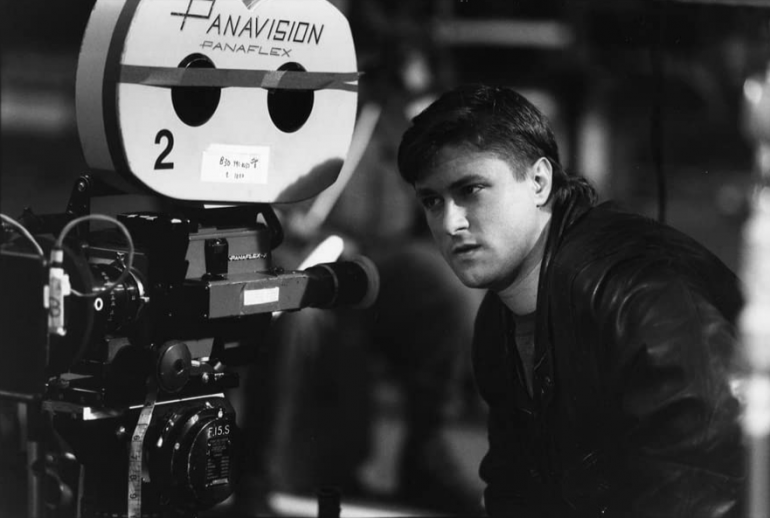
KH: So, Mr. Red, like WHITE KNUCKLE, I believe it won’t be long before we’ll be hearing that STOPPING POWER is headed for the Big Silver. I see it clearly as SPEED meets DIE HARD WITH A VENGEANCE; what was the genesis of the story?
ER: One day was watching a TV news report showing a high-speed chase of a bank robbery suspect on an L.A. freeway with all the news helicopters filming it. Wondered what would happen if the bank robber switched their getaway car with someone else’s car and used them as a decoy. They might get away with it. Everybody would be watching the other car. But how would you make another driver drive the getaway car? Then I thought what if the escaping bank robber carjacked a parent and child, kidnapped the kid, switched cars and blackmailed the parent into doing the driving the bank robber’s car as a decoy leading the police in the wrong direction. It would be a perfect crime, a clean getaway. That was the seed of the story.
The characters of the mother, daughter and kidnapper sprang from the idea. Here’s this mother suddenly in this extraordinary situation where everybody thinks she’s a bank robber and nobody believes her daughter has been kidnapped. It’s up to her not only to elude a citywide police dragnet but also somehow catch up to the kidnapper and get her daughter back. And the kidnapper is watching the high-speed chase on the TV news and has eyes on her every minute. She is all alone. Out of this impossible situation, the ultimate predicament for a mother, the fun for us is how she figures it out. Because of course she will.
In a book, it seemed like the kind of thing people would believe could really happen and happen to anyone. In thriller terms it was preposterous yet plausible. My favorite suspense stories are the kind of in-the-wrong place-at-the-wrong time situations that could happen to regular people like us. I love Alfred Hitchcock and this appealed to me as a classic Hitchcock mistaken identity set up where an innocent individual is framed for a crime he didn’t commit, as if Alfred Hitchcock had done a car chase thriller.
KH: When you sit down to write is it a book idea, a script idea, or simply…I have to get this story out?
ER: Some ideas I have are for novels and others for scripts. I often get an idea for a screenplay and sit down and write it in two weeks. Novels involve much more material on every level, and on those will usually make notes for months or even years until I have enough notes that the book is ready to write. Author Tom McGuane phrased that stage perfectly calling it “building up the cabin pressure.” In the end, the ones that get written are the ideas I can’t stop thinking about, for purely subjective reasons.
KH: Having recently seen and enjoyed The Last Duel, appreciating the Rashomon quality, what made you choose the shifting POV from first person to third person storytelling…or did the story dictate that
ER: Maximizing reader identification with the characters meant telling the story from multiple voices. The novel has two first person narratives with the mother Stephanie and her kidnapped daughter Libby, so we see the same events from their contrasting different perspectives, giving us the whole picture. First person gets the reader right inside the character’s heads. We needed to be outside of the villainess Ilsa, so I wrote her third person so we never truly know what she’s thinking, keeping her unpredictable because we never know what she’ll do next. What I love about Rashomon is the truth is the whole of the sum of the parts of all of the characters’ perspectives!
KH: You’ve spoken in other interviews about liking in movies “what you don’t see.” Can a writer get away with that when writing novels, or is that best left to the screenplay?
ER: “Keeping it off-screen” is a storytelling technique that works equally well in films and books. In a movie we would describe that as “not how you show it but how you don’t show it” or in a novel we might say something is described “between the lines,” but either way it means handling a scene in such a way that people fill in the blanks. Then they use their imagination picturing things you just suggest instead of explicitly showing or describing graphically. There’s a place for both.
KH: Christopher Isherwood was quoted as saying writing for Hollywood made him a better novelist in the sense that it showed him greater economy of language; do you feel the same?
ER: Yes, writing screenplays you cut everything out that doesn’t move the story forwards. You “load” words because you use as few as possible. It’s a strong background to have as a novelist because for screenwriters “when in doubt, cut it out.” Also, scriptwriters are story wonks and we bring that narrative skill-set to novels. When we write them. Most screenwriters can’t write a novel even though they try, or write just one. I’ve written eleven. And honestly many novelists can’t write a script to save their life. Screenplays and books are very different animals.
For instance, in a novel you have many more tools in your storytelling toolbox. In a script, you have just action and dialogue. You have those in a novel, too, but also first second and third person narratives, different voices, and much more ordinance to weaponize your prose. The thing I love about doing both is that when a script is made into a movie, we give you the pictures so everyone sees the same film, but in a novel, we bring their own pictures to the prose, based on our mental images and memories, so it’s more personal.
KH: I love the tension in the early scenes with Ilsa and Libby, before their dialogue kicks in later. It was for me, reminiscent of what you did in the scenes involving Michael Pare and the dog in Bad Moon.
ER: There’s a lot of stare-downs, that’s for sure! At first, Ilsa and Libby deal with each another in a silent primal animal level, sniffing each other out. Not unlike Pare and Thor in Bad Moon, as you say.
KH: Stephanie’s thought as she makes a dynamic and daring rooftop evasion from the police is that “it’s like being in a car commercial from Hell.” Does the Fury Road adrenaline you capture come from the novelistic glee that says, “Gee, I’m glad I don’t have to do this on a budget with a schedule?”
ER: Sure, writing a novel obviously the only limits are the limits of one’s imagination. The only thing to worry about is fully imagining the scene in enough detail so it’s believable. But the rooftop car chase certainly could be viably filmed with first-class precision vehicular stunt driving and standard mechanical special effects.
KH: Dan Crockett turned out to have more moxy than I gave in through the early stages. You pay off characters well, and as much as this is a book about “hot minutes” and high-octane mechanical carnage; what makes it all work is the people?
ER: It’s always all about the people. Action or suspense scenes are empty exercises in mechanics unless you care about the characters involved, even the bad guys. It’s not about sympathetic characters—we become involved with flawed characters we don’t morally approve of all the time in what we read and watch—audience and reader involvement is the apt phrase. I’d say it’s an even split with the mother and kidnapper in STOPPING POWER as far as who interests us the most. Stephanie is a mother tiger protecting her cub, hard not to root for. We don’t root for Ilsa, quite the opposite, but we do get to understand the kidnapper and become involved with her. Many readers tell me she is the most interesting character in the book. We all know villains are often the most compelling characters, like in Shakespeare. Lots of reasons for that.
A big part of the drama in Stopping Power deals with the Stockholm syndrome dynamics of the kidnapper Ilsa and her teenage captive Libby. Each needs to keep the other talking for survival reasons, forcing this unlikely pair to engage and form an unusual if not friendly bond. Ilsa, a completely emotionally detached human being, finds herself experiencing younger sister feelings for the teenage girl, and because Ilsa has no experience with feelings she becomes unstable, which could have consequences for both her and Libby. It’s an instance in the book where the drama between the characters ups the jeopardy. Those are some of my favorite chapters in the novel.
KH: In light of the recent tragedy on the set of RUST, it made Stephanie’s backstory, primarily her relationship with her father extremely poignant?
ER: Sam Power took reckless safety risks as a stuntman like his generation of stunt people did making movies during those days, but Stephanie’s dad was a seasoned professional and the only lives he risked were his own and unfortunately hers that one time. Ironically, if her father Sam had not taken those risks with Stephanie teaching her how to stunt drive, she would not have survived the ordeal in the novel when Ilsa puts her to the test.
KH: $64,000 question. Did Jack Stevens crap his pants when the boys from SWAT came calling. I only ask ’cause the Sheriff said things got messy?
ER: Let’s say it’s an example of “between-the-lines!”
About The Author: Eric Red is a Los Angeles-based novelist, screenwriter, and film director. His films include The Hitcher, Near Dark, Cohen and Tate, Body Parts, Bad Moon, 100 Feet and The Last Outlaw. He has written nine novels, including Don’t Stand So Close, It Waits Below, White Knuckle, The Guns of Santa Sangre, The Wolves of El Diablo, Noose, Hanging Fire and Branded. Red divides his time between California and Wyoming with his wife and two dogs. Find out more about Eric Red and his books and films on his official website EricRed.com, on Facebook at OfficialEricRed, and on Twitter @ericred.
“There isn’t another novel this year that cuts as quickly to the chase as Stopping Power. Eric Red’s new thriller is tense, tough and tenacious. Once the story evolves from its simple but highly effective premise there’s no exit for the reader: a psychologically clever described mother-and-daughter relationship and a vicious villainess sure make for a hell of a ride – a purist genre narration encased in a very contemporary almost all-female action firework.”
- Marco Siedelmann, Publisher and Editor, Seidelman & Company.
